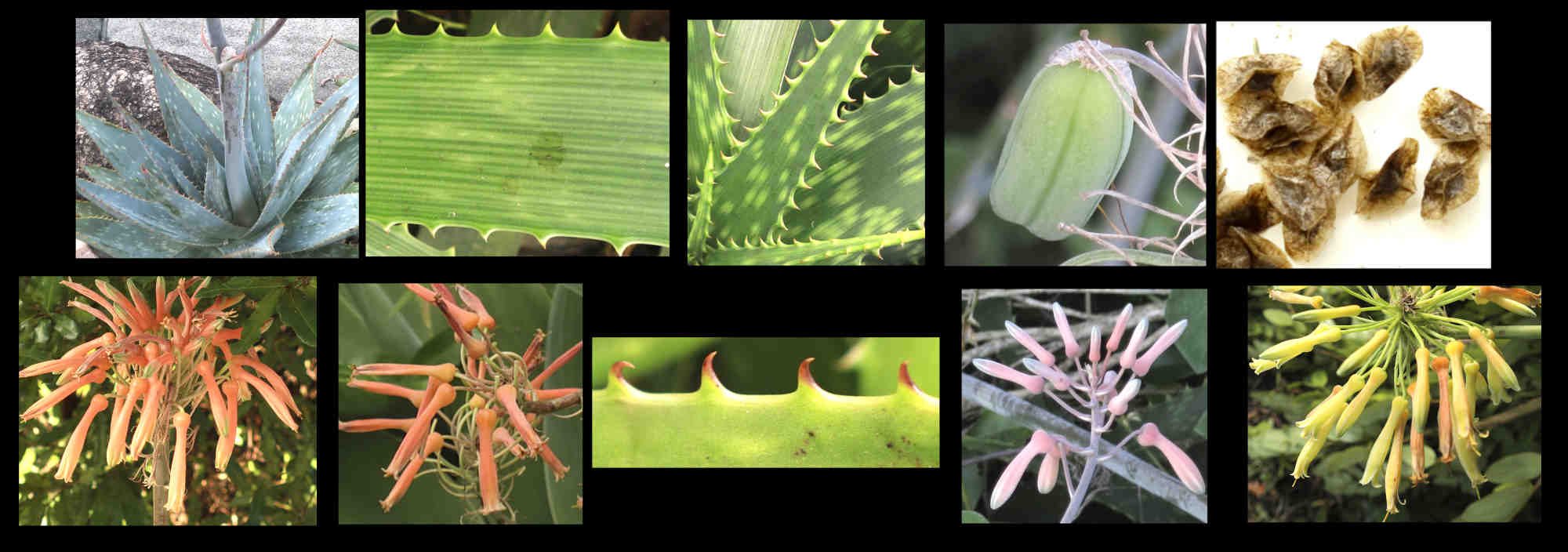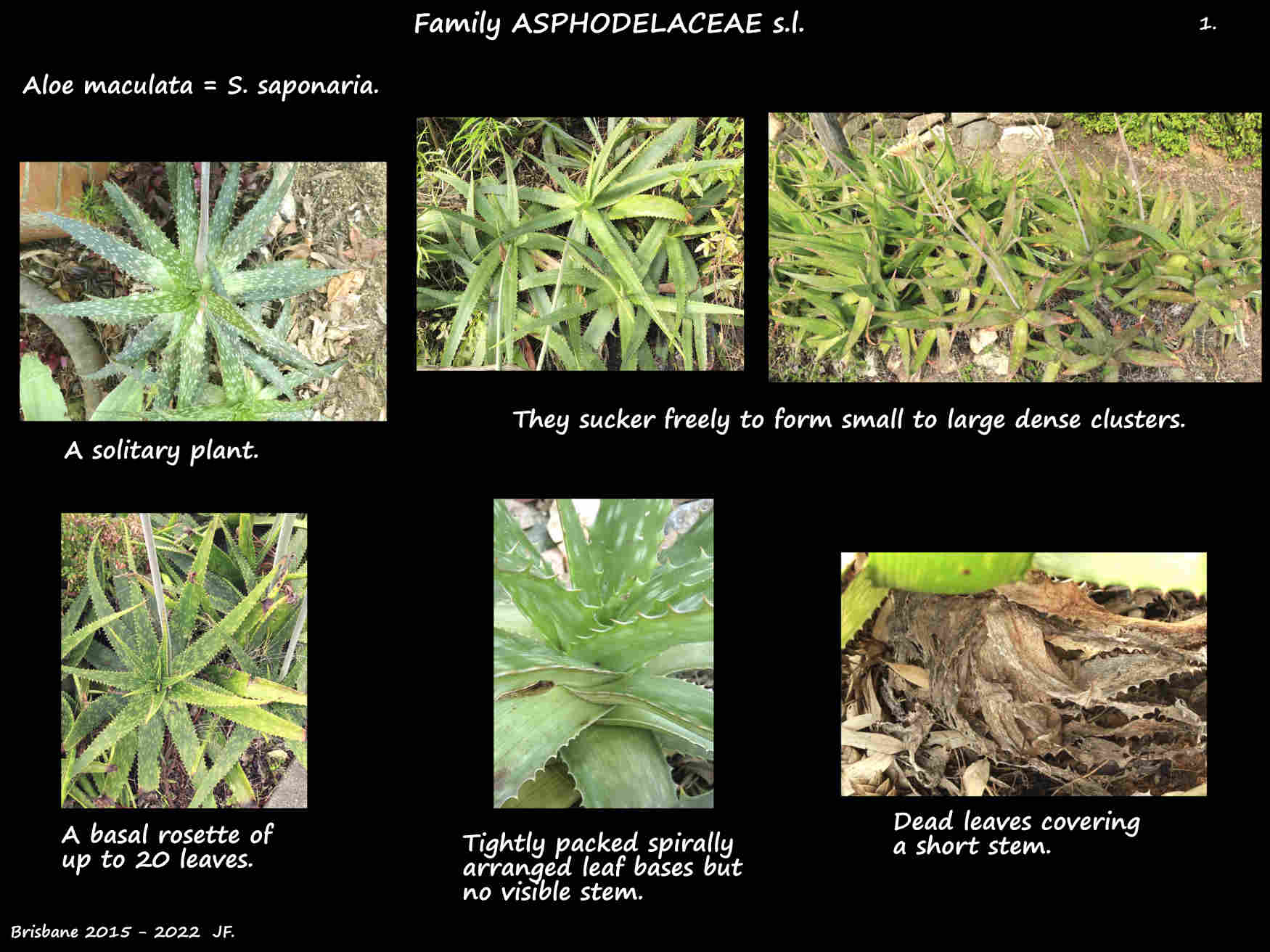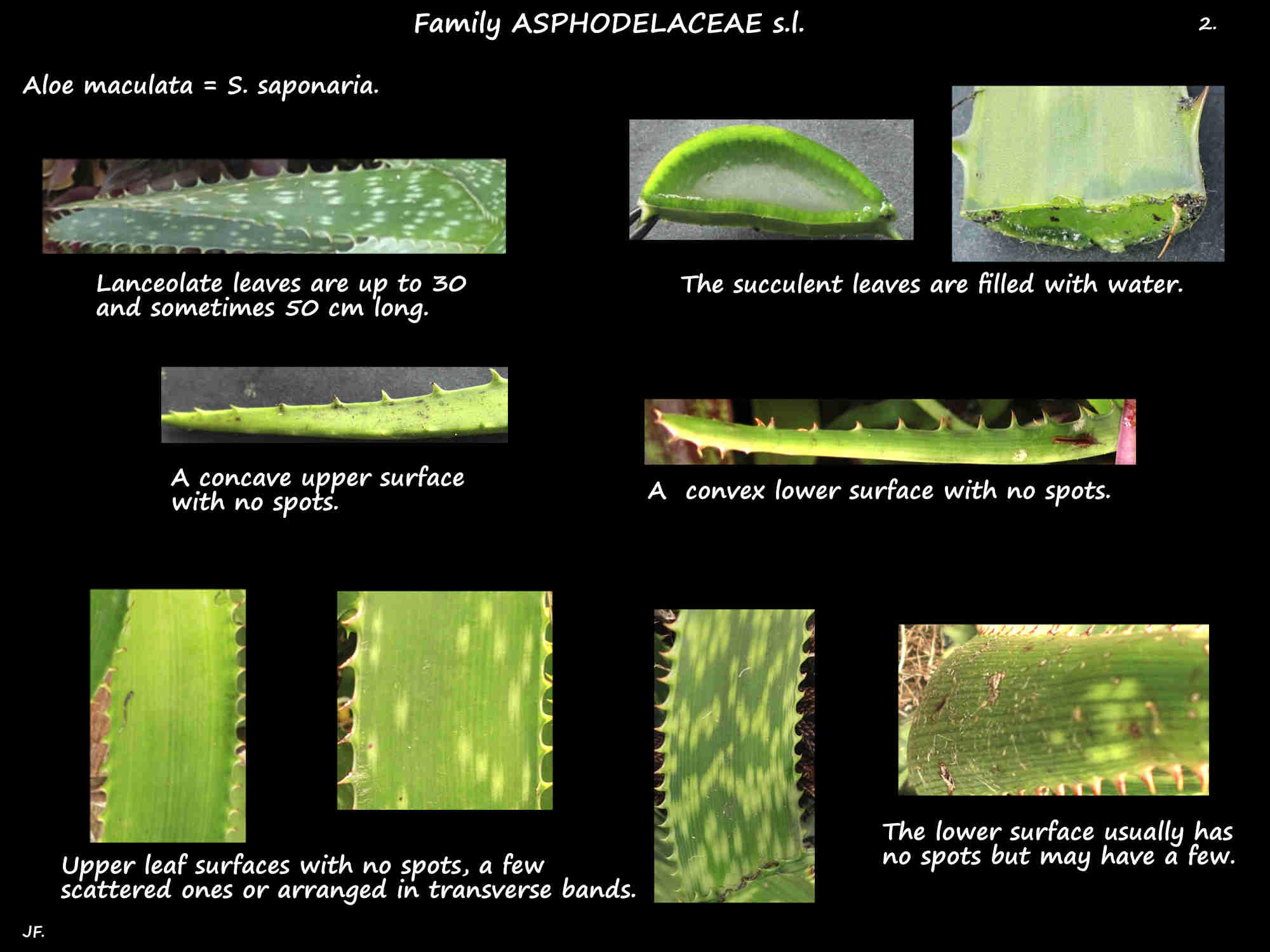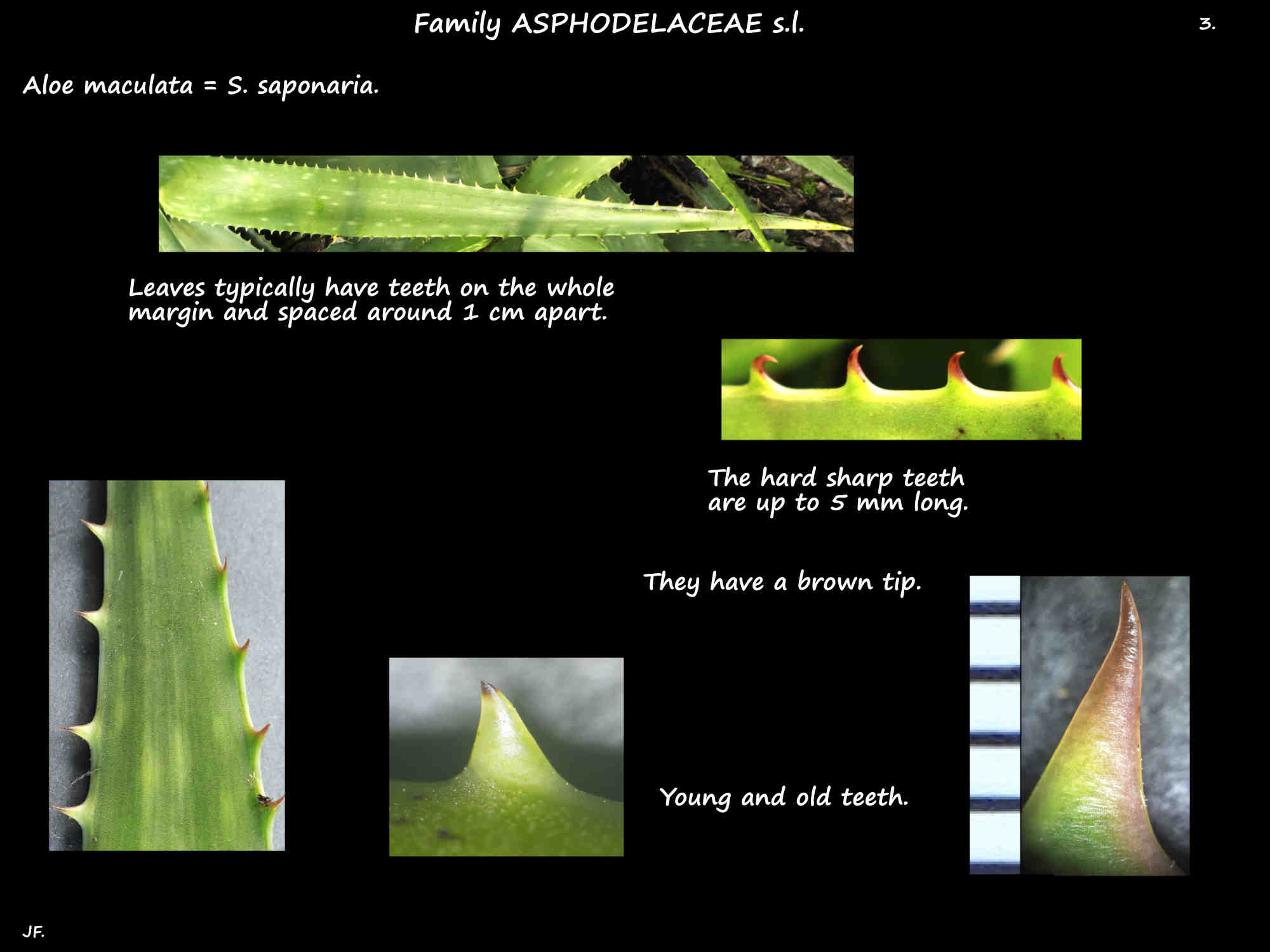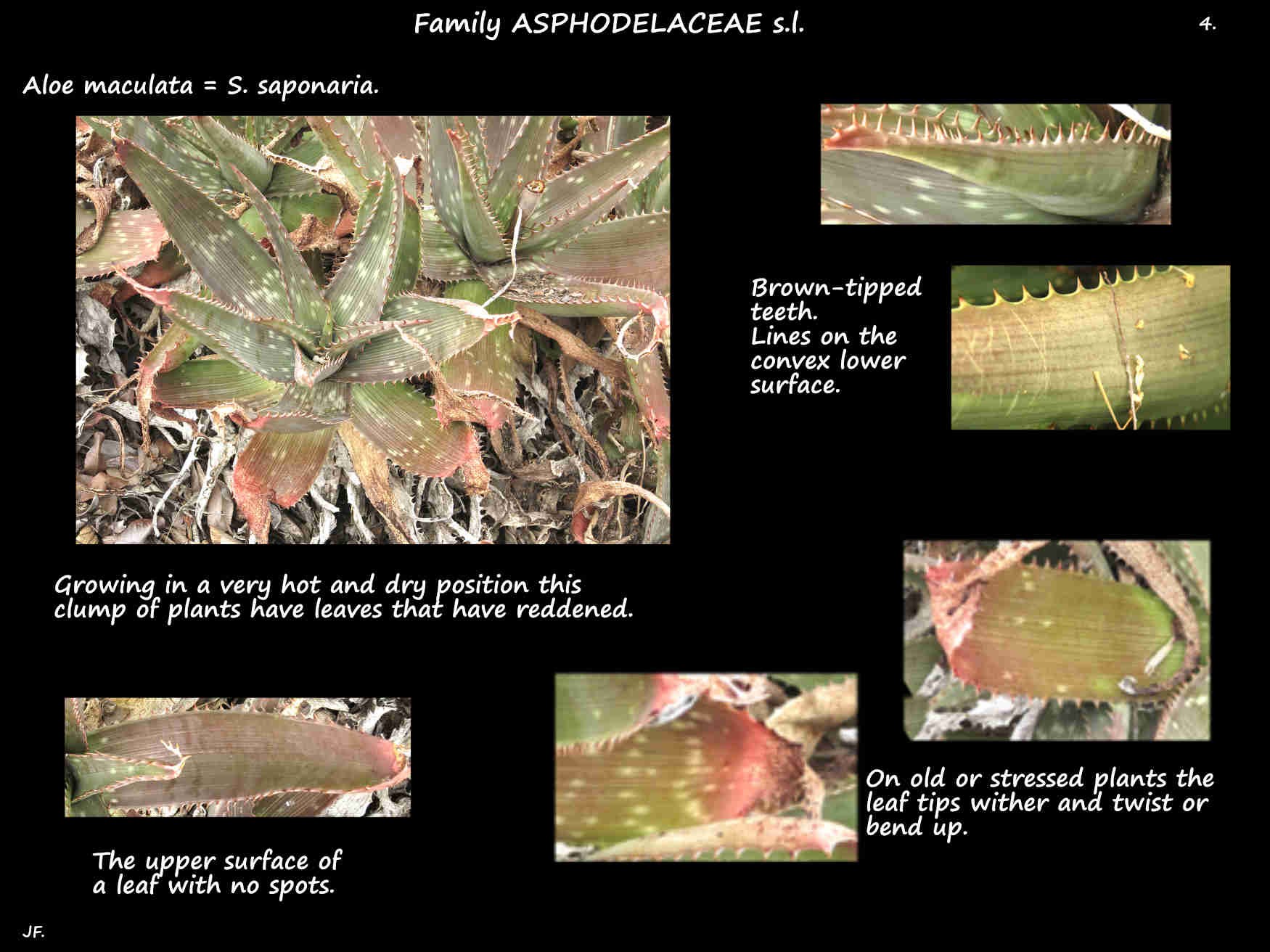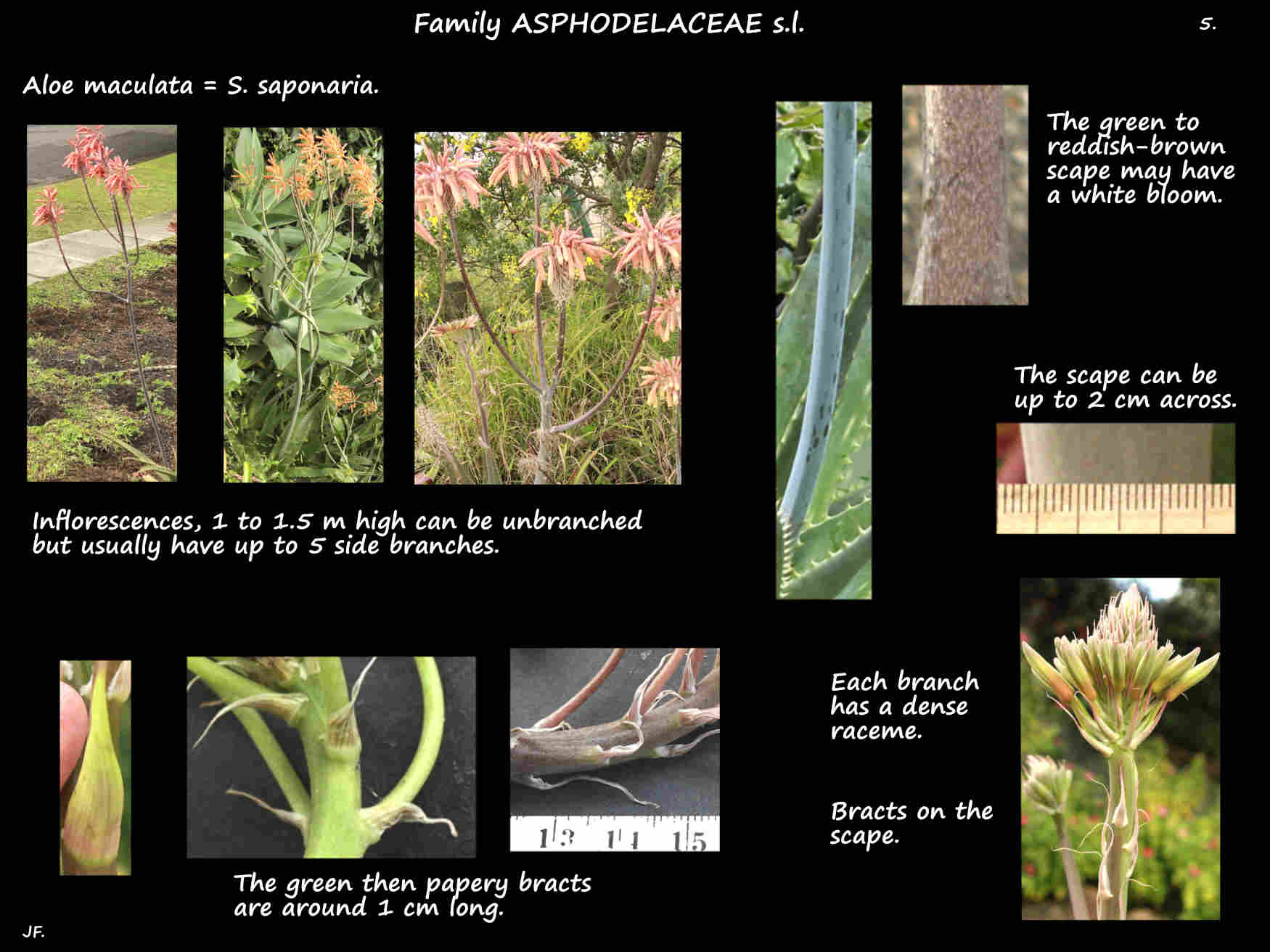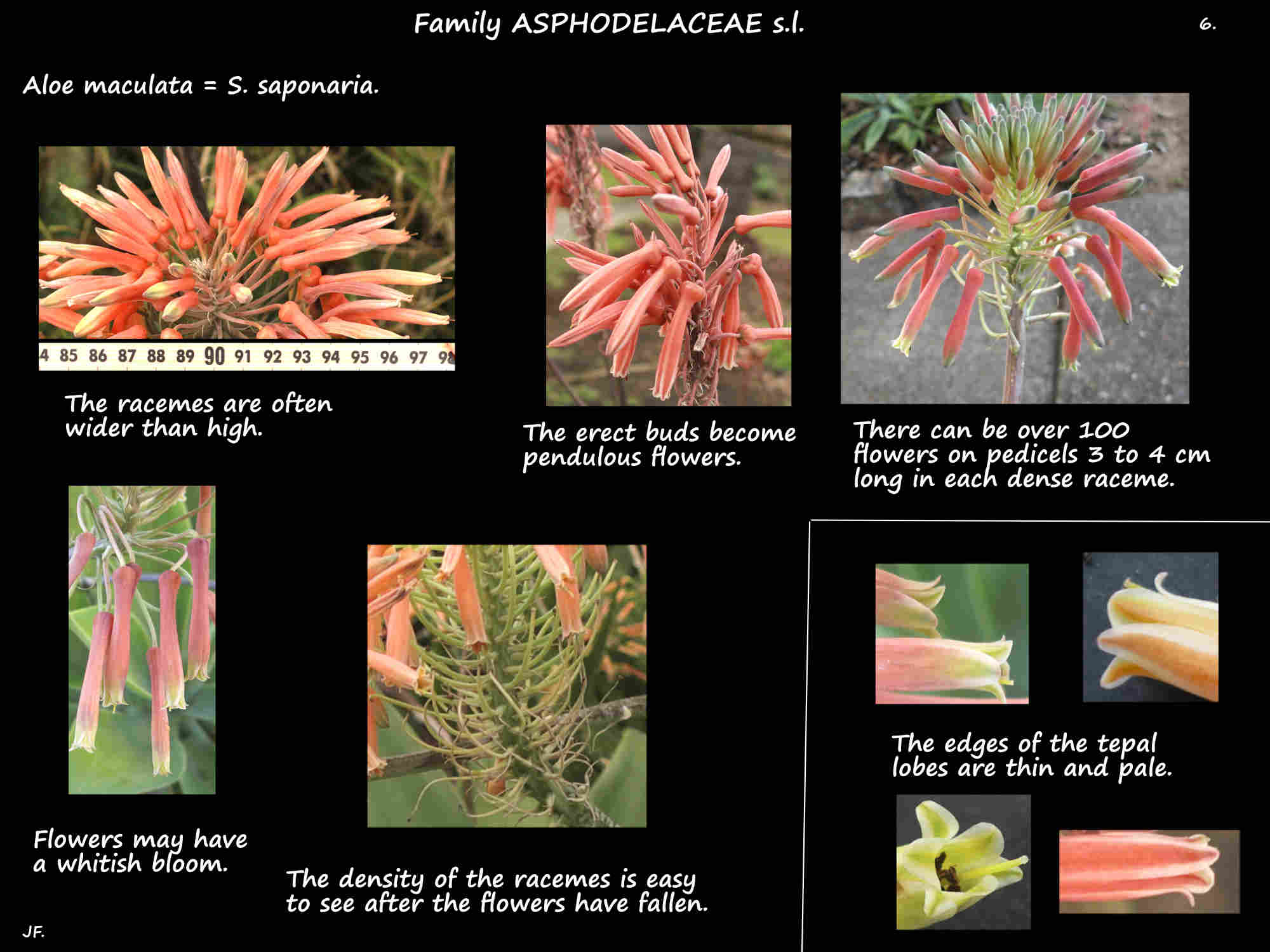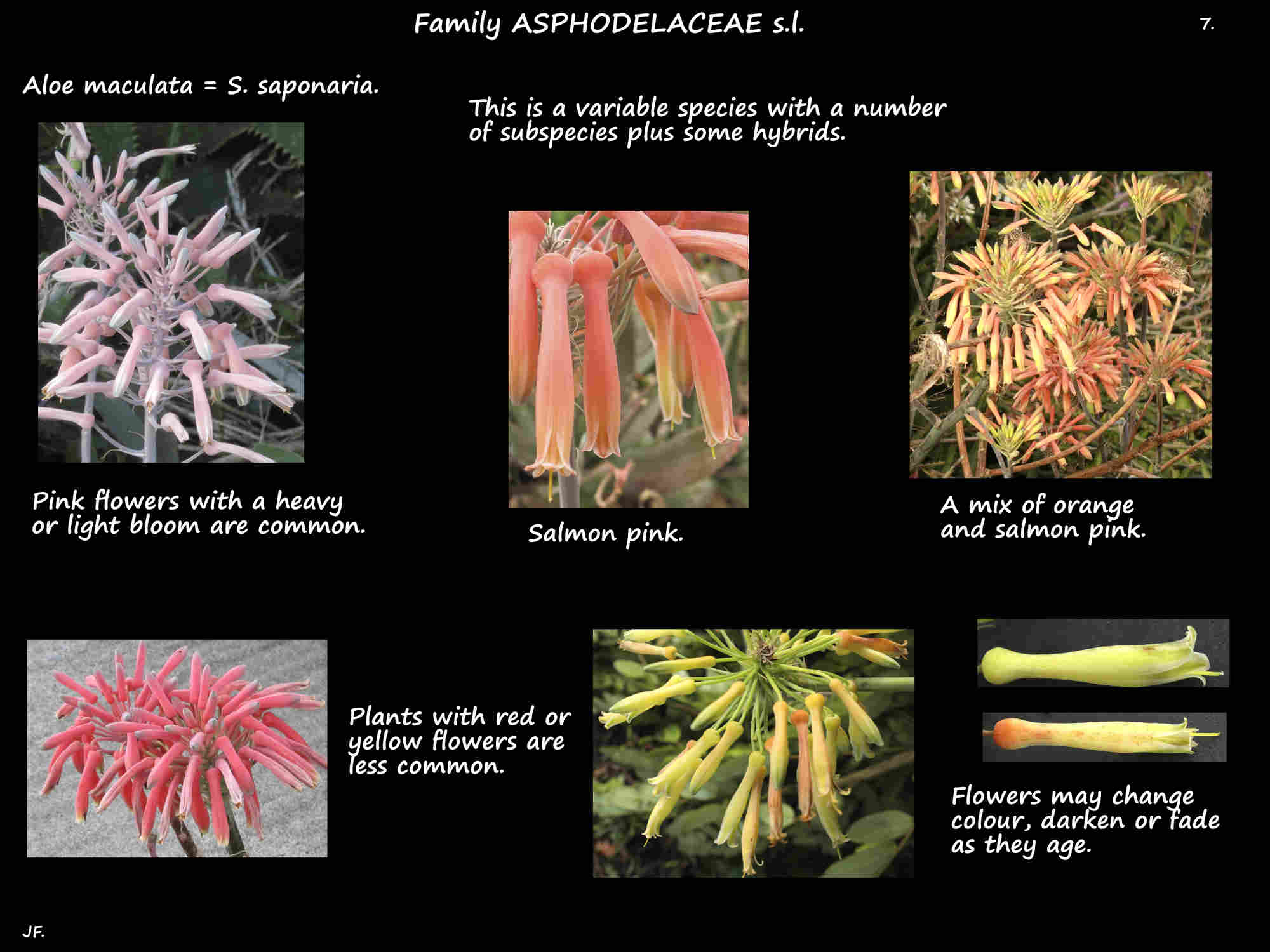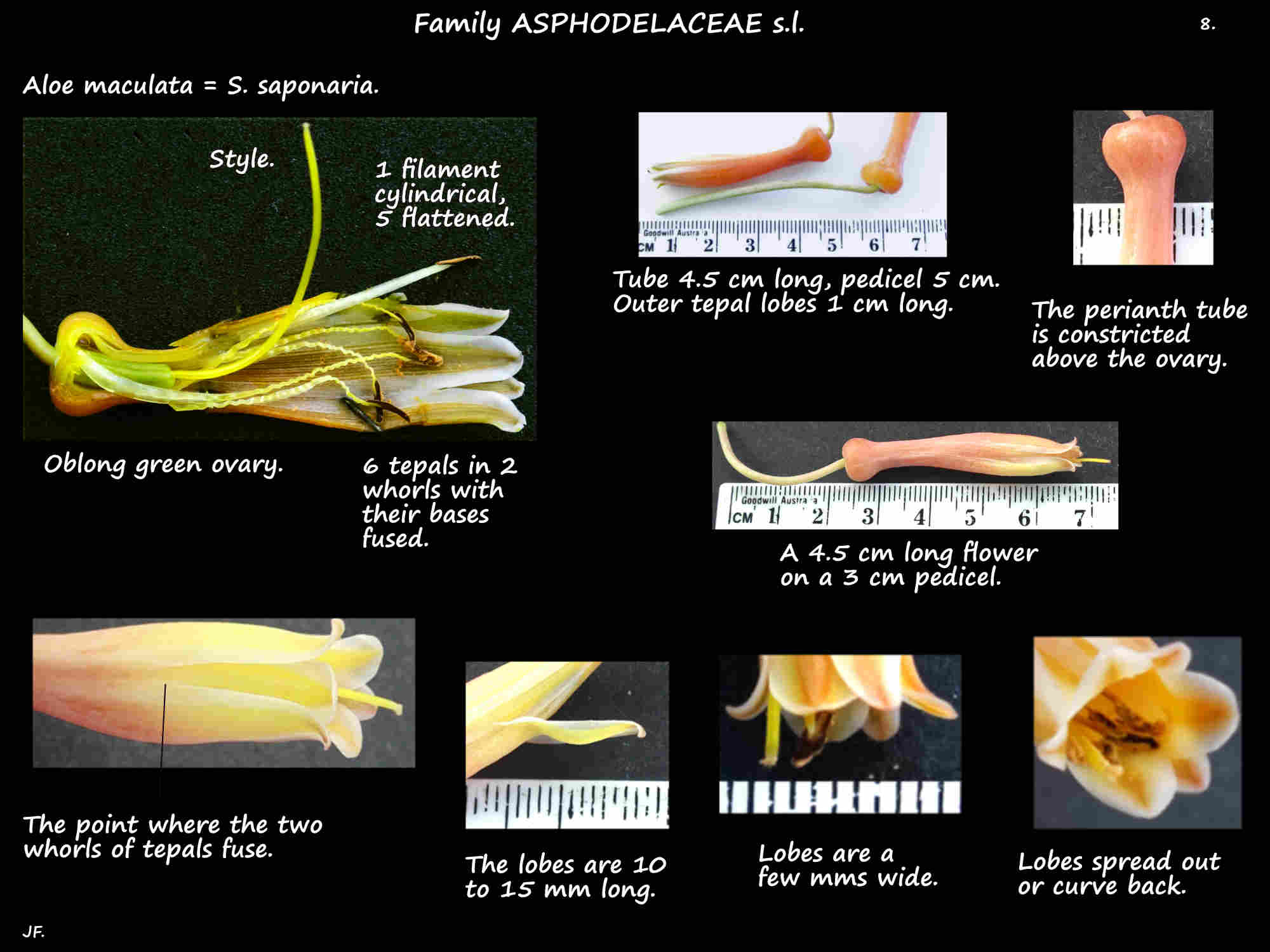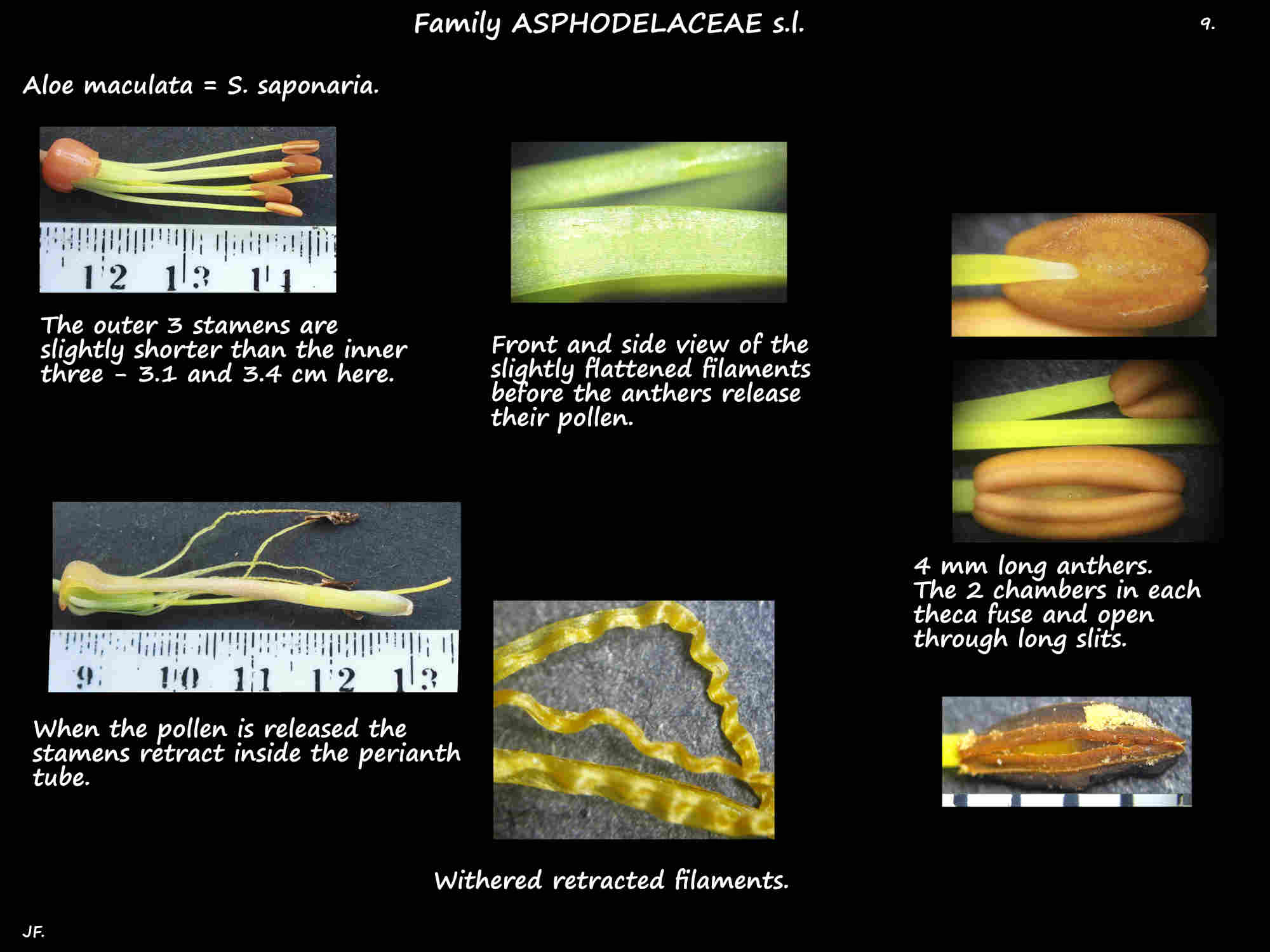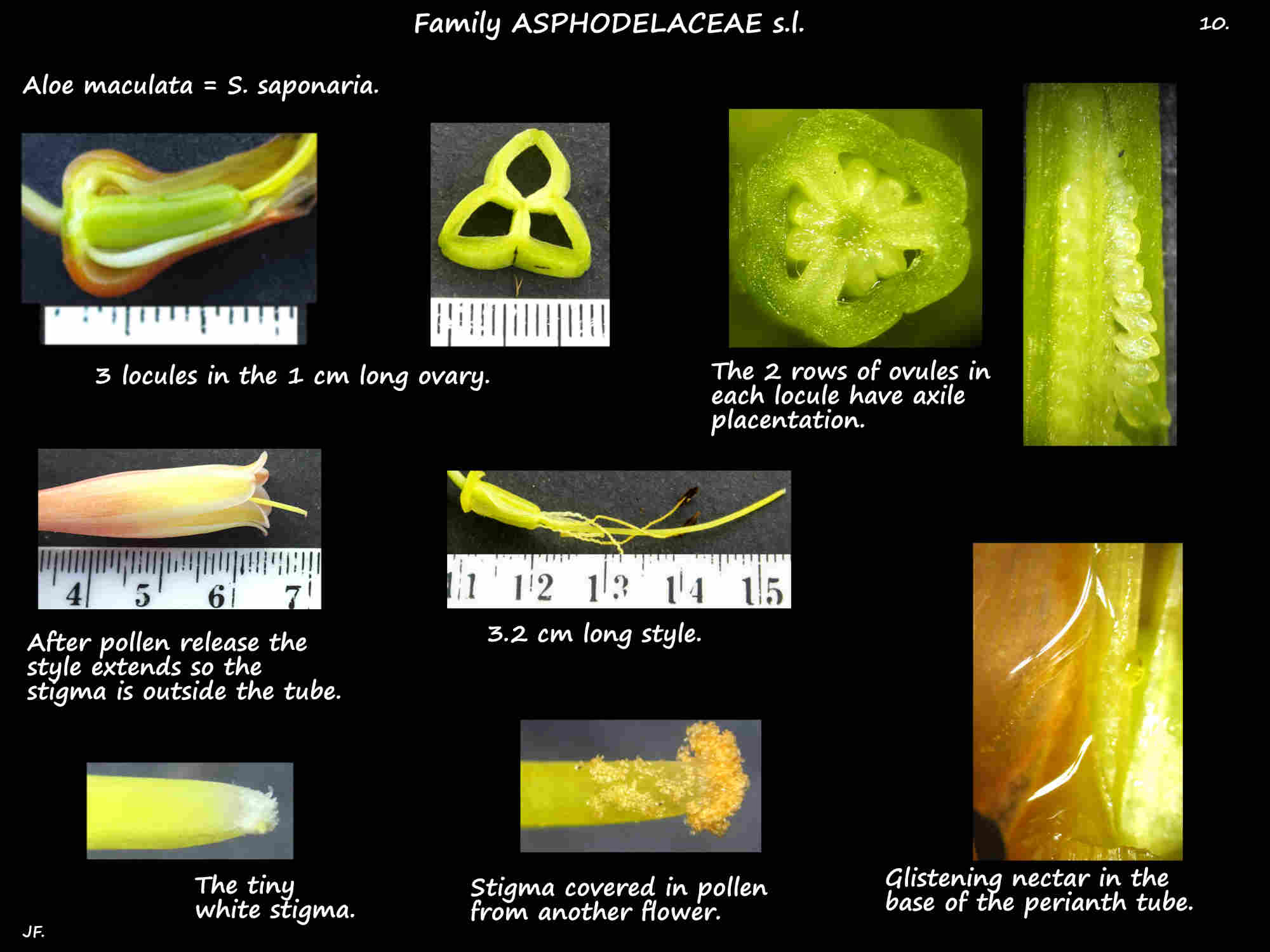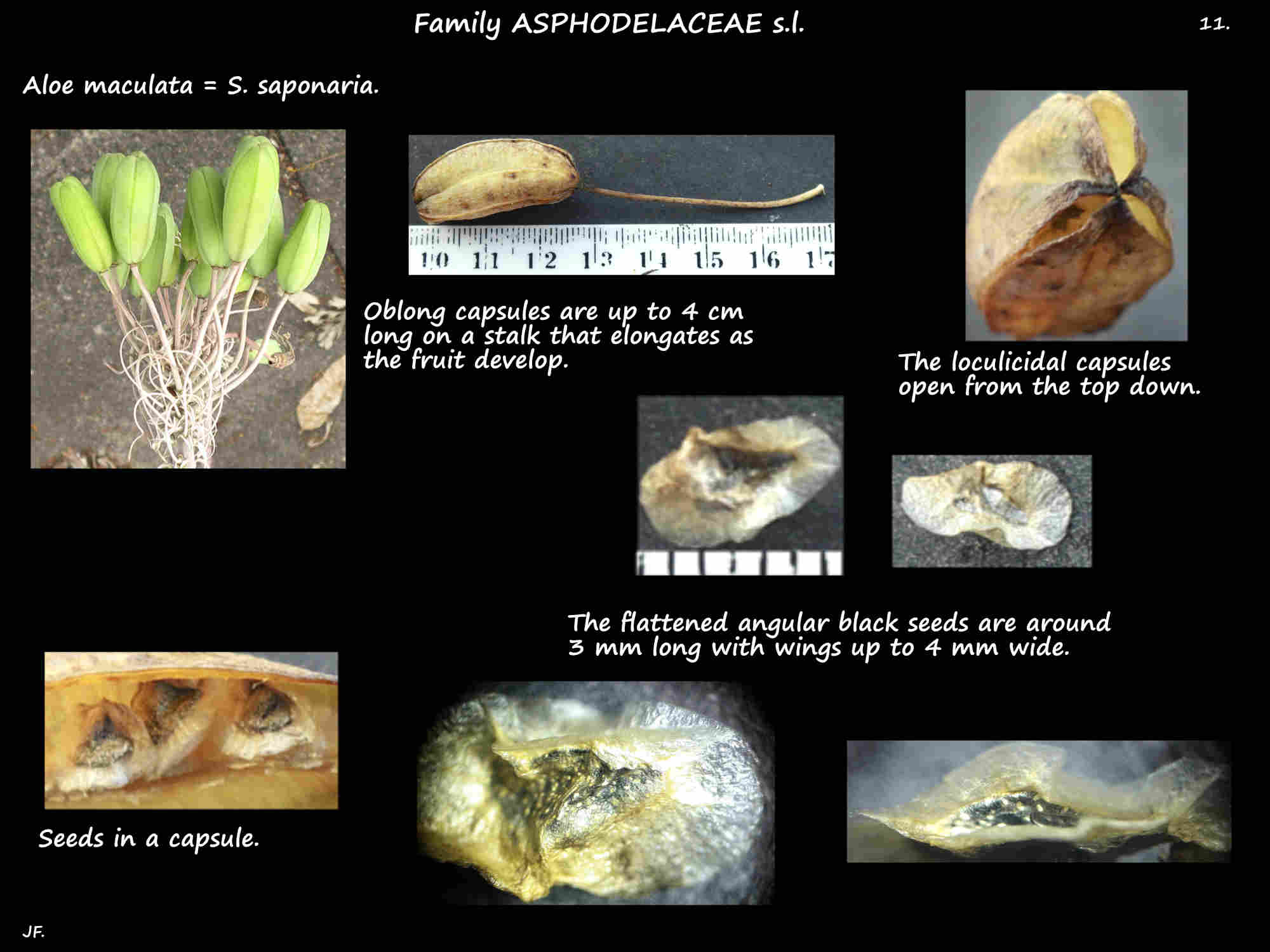Aloe maculata = Aloe saponaria.
There are 15 synonyms for the Common Soap or Spotted aloe which is naturalised in S. E. Queensland.
In Brisbane they are by far the most commonly seen aloes in gardens and in the wild where they are a minor environmental weed.
They are erect succulent plants with a rosette of leaves.
There is usually no stem but older plants can have a stem up to 0.5 m high.
They sucker easily leading to low dense clumps.
Rosettes have up to 20 spreading or recurved lanceolate leaves with a pointed tip.
Leaves are commonly around 30 (50) cm long, 12 cm wide and pale to dark green.
The upper flat to concave surface is green with many elongated white blotches.
The blotches may be random or arranged in irregular straight or wavy transverse rows.
The paler green convex lower surface usually has no blotches but there may be a few.
It may have faint to obvious darker lines (veins) running down it.
About every 1 cm around the margin are sharp 3 to 5 mm long teeth that have a brown tip.
The succulent blade has a clear exudate.
In harsh conditions the leaves may redden and the tips wither and twist.
Inflorescences up to 1 or 1.5 m high have a stout leafless stalk or scape up to 2 cm across.
The scape is green then a purple-brown with a whitish bloom.
Inflorescences can be simple but they usually have up to 5 or more ascending side branches on the upper half.
At the base of each branch is a linear to lance-shaped bract commonly 10 to 20 mm long and a few mms wide.
Initially green they soon become brown and papery.
Each branch ends in a dense capitate (head-like) raceme around 10 cm long and 15 cm wide.
With a flattish top each can have up to 100 or more flowers that open from the bottom up.
Flowers are on pedicels around 3 to 4 cm long that can grow to double that in the fruit.
The tubular flowers are 3 to 4.5 cm long with 6 tepals in 2 whorls.
The outer tepals are fused into a tube with lobes up to 10 or 15 mm long and 3 mm wide.
The inner tepals are fused to the outer ones for most of their length with similar lobes.
The tube is swollen around the ovary, narrowed above it then widens slightly to the mouth.
The lobes have a rounded tip and may spread out or curve back.
Many keys to the species do not mention the flower colour but one says they are salmon pink to orange or red.
Various descriptions have them as orange to pink or red, orange-red to pink, red to salmon-orange,
yellow to red or pink, salmon-pink to orange or just yellow or red.
These descriptions include the colours of subspecies such as A. maculata subsp. maculata.
A thin whitish bloom dulls the colours.
There are 6 stamens with slightly flattened filaments that are inserted at the base of the ovary.
They are in 2 whorls with the outer three being up to 5 mm shorter than the inner ones which are 3 to 3.5 cm long.
The 4 to 5 mm long anthers open inwards via long slits.
When releasing pollen the filaments hold the anthers a few mms outside the perianth tube.
After pollen release the filaments retract the anthers before the stigma of that flower becomes receptive to pollen.
The superior green oblong ovary is up to around 1 cm high with a thin style.
The small stigma lies inside the tube until after the flower has released its pollen then extends up to 5 mm past it.
The male and female phases each last 1.5 to 2 days.
The fruit are brown oblong loculicidal capsules 2 to 4 cm long.
Each of the 3 chambers has numerous seeds with axile placentation.
The flat black seeds around 3 mm long have membranous wings up to 4 mm wide.
J.F.
